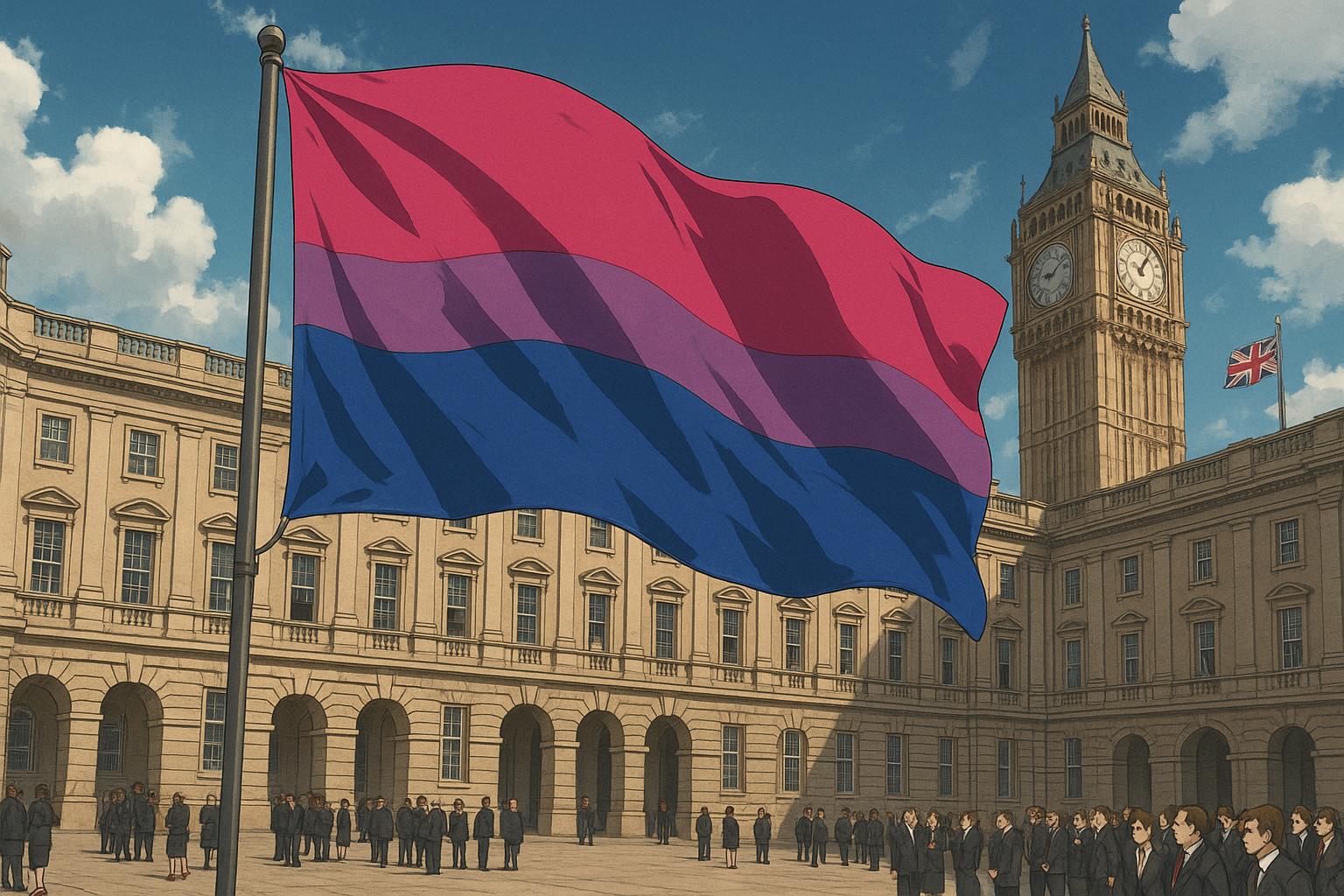Foreign Secretary David Lammy’s recent decision to fly bisexual flags in support of Bisexual Awareness Week has ignited controversy within the UK government. Accusations of illegal conduct have arisen, claiming that the flags were displayed without the necessary planning permission. The pink, purple, and blue flags appeared prominently in the courtyard of the Foreign, Commonwealth and Development Office, a move that some Conservative MPs argue breaches planning regulations, as the bisexual flag does not fall under the “deemed consent” provision afforded to the rainbow flag.
The flags, which were originally purchased for £285.93 each in 2021 to commemorate the 30th anniversary of the end of the ban on LGBTQ+ individuals serving in the diplomatic service, have proven contentious. Shadow Cabinet Office minister Mike Wood has voiced that the display constitutes a “criminal offence” carrying a potential fine of up to £2,500. In a letter addressed to Lammy's department, Wood expressed astonishment that the Foreign Office did not opt to display the “white flag,” a metaphorical allusion to what he describes as the Labour government’s “sabotage” of Brexit.
Furthermore, Wood critiqued what he perceives as the government's embrace of identity politics, noting a societal shift towards “aggressive and intolerant atomisation” rather than fostering unity. His comments reflect a broader concern among certain political factions about perceived overreach in representing diverse identities. In defence, Foreign Minister Catherine West acknowledged that officials were aware of the lack of deemed consent but argued that such permission is unnecessary when flags are displayed on enclosed land, indicating a nuanced legal interpretation of planning regulations.
This incident occurs against a backdrop of fluctuating government policies regarding the display of LGBTQ+ flags. A previous decision in 2015, made under the leadership of then-Foreign Secretary Philip Hammond, saw the Foreign Office retreat from flying the rainbow flag during Pride celebrations, opting instead for a conservative display of only national flags. This shift was met with considerable disappointment from LGBTQ+ advocates who viewed the symbol as critical to their fight for equality and acceptance.
Historically, the display of queer flags has been contentious. A notable case from 2005 involved Westminster City Council banning rainbow flags in Soho, igniting outrage from the LGBTQ+ community and prompting reviews of planning policies. Such incidents illustrate the ongoing complexities surrounding the visibility and acceptance of LGBTQ+ identities in public spaces.
As public sentiment remains divided, some view Lammy’s actions as "woke virtue-signalling," questioning the appropriateness of advocating for inclusivity amid various global crises. Conversely, supporters see the flags as essential symbols of diversity and representation within the Foreign Office, representing a renewed effort to embrace multifaceted identities.
Ultimately, the discourse surrounding the flying of these flags reflects broader societal debates about identity representation, state responsibility, and the evolving nature of political expression in an increasingly diverse society. As this controversy unfolds, it remains to be seen how the Foreign Office will navigate the legal implications of its actions and the public’s response.
Reference Map:
Source: Noah Wire Services
